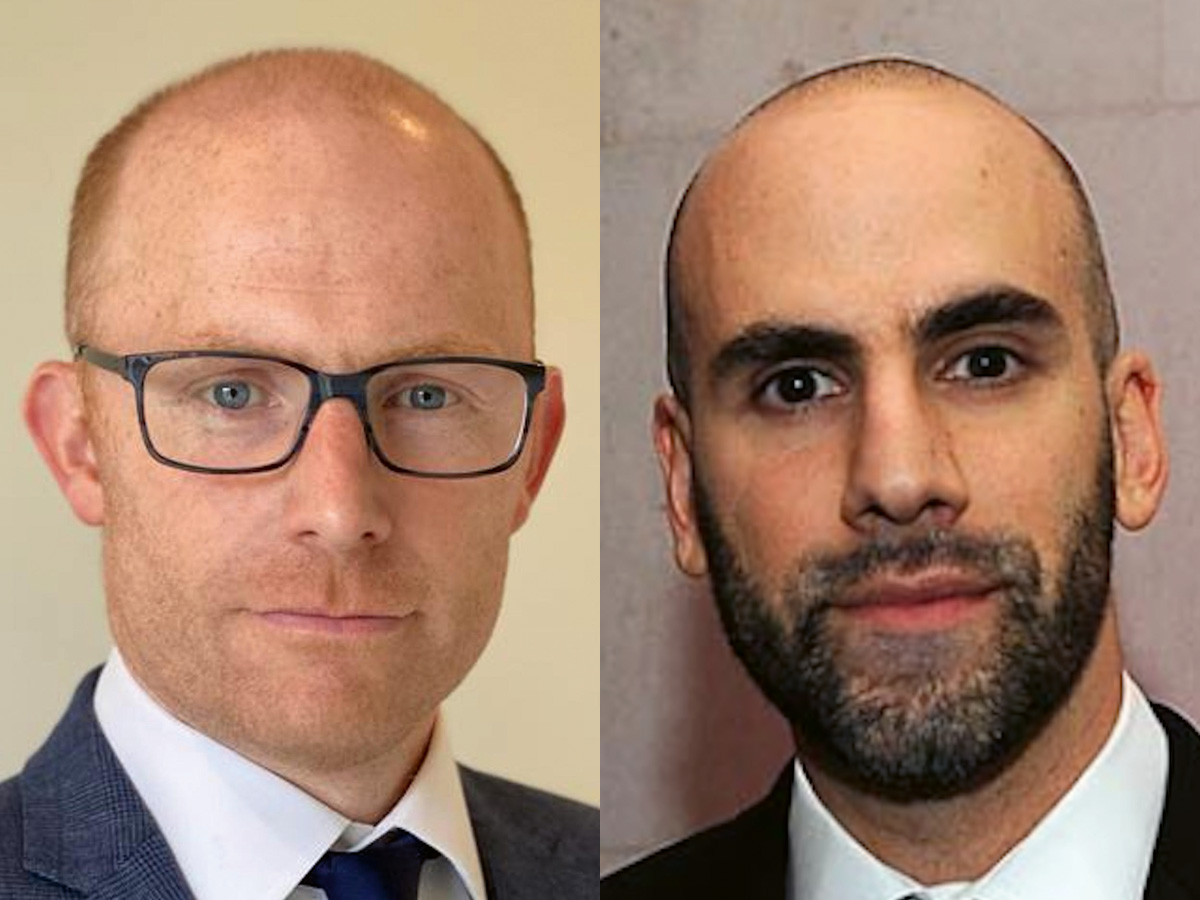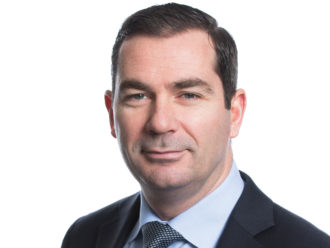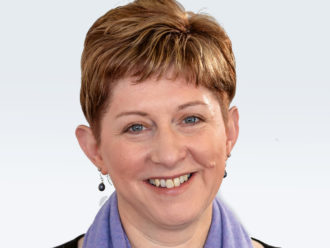What have been your priorities in the four months since you joined the West Yorkshire Pension Fund, Euan?
Euan Miller: Getting my head around the role. Specifically, how it differs from my experience at the Greater Manchester Pension Fund.
There is a lot to familiarise myself with on the members administration aspects, in particular, because we offer a shared administration service to other LGPS funds. And then it has been getting used to how things work operationally, on human resources and IT provision, for example, because every council operates differently.
I have also been getting to know the West Yorkshire Pension Fund team, while ensuring a smooth transition from my predecessor, Rodney Barton.
Importantly, we have the fund valuation going on, which we need to finish by the end of March. This happens every three years and is a natural moment to consider and reset our strategic allocation. So, the timing of Leandros arriving is good in many ways.
Do you see any big strategic allocation changes, Leandros?
Leandros Kalisperas: Well, through the actuarial valuation we are triangulating where we are in the funding ratio range, with contribution rates and the expected rate of return on our assets. Overall, we look to be in a reasonably healthy position.
It is more of an evolutionary process, than one of significant change. From a strategic asset allocation perspective, it is all about understanding the investment universe and how it is changing.
One of the reasons I have been brought in is to see how the strategic asset allocation might evolve. That may not mean a dramatic shift in risk and return, it may just mean the universe gets filled in a bit more than it has been.
What is the existing portfolio strategy?
Kalisperas: We are an open long-horizon scheme. We therefore have a long-risk bias, which has served the pension fund well for years.
The portfolio is broadly 60% equities, 20% fixed income and 20% alternatives and private markets. One of my initial challenges and opportunities is to work with our equities, bonds and alternatives teams in making significant allocations across the UK and globally.
From there, it is a case of asking if anything obvious is missing. And are there things we can improve and add to the mix?
Have you come to any conclusions so far?
Kalisperas: No. I have been here six weeks and this pension fund has done well over a number of years without me. So, it is a case of coming in, listening to the team, observing and then seeing what might be required.
Leandros, you have great experience having served as head of credit for USS. What attracted you to the chief investment role at West Yorkshire?
Kalisperas: West Yorkshire Pension Fund is the jewel in the LGPS crown because it has the full toolkit, from strategy to implementation. We have significant partnerships through GLIL Infrastructure and the Northern Private Equity Partnership, as well as additional implementation capabilities. If I compare it to USS, it is quite similar in terms of the range of flexibility and scope.
What are the major differences between the pension funds of Greater Manchester and West Yorkshire?
Miller: The size of the committee is slightly smaller here. There are five authorities in West Yorkshire – Bradford, Calderdale, Leeds, Kirklees and Wakefield – where Greater Manchester has 10. Having less authorities perhaps allows the non-administering authorities to have a greater role in the governance arrangements.
What attracted you to this role, Euan?
Miller: I had been at Greater Manchester for eight-and-a-half years, so felt it was time for the next challenge. It is an investment heavy job at West Yorkshire, so we have two people replacing one.
In Leandros, we have someone with a great deal of investment experience, while I’m in a more strategic role. Hopefully, it will work well.
So all the investment issues will be left to Leandros?
Miller: Leandros leads the investment team and will drive much of the agenda, and under the scheme of delegation it is the director’s responsibility to manage the fund. We are going to be doing a governance review in the next few months and how this operates and whether any improvements can be made will be looked at, but Leandros and I are already working closely together.
The LGPS Scheme Advisory Board has been working on the Good Governance review and has handed it to the government who are launching a consultation. I suspect we already meet most of the recommendations, but the two of us coming in could be an opportunity to see how things can be tweaked.
How is the relationship with Northern LGPS?
Miller: Good, I think. My role at Greater Manchester was assistant director for funding and business development. The first part of this was an almost in-house funding actuary role, talking to the employers.
On the business development side, I was interacting with other LGPS funds and related parties in the pensions industry, like the PLSA. I know a lot people in the LGPS through that role, which has been helpful.
How is the pooling process going in light of Kensington and wanting to exit?
Miller: The government has been talking for some time about releasing a consultation on the next steps in pooling. I don’t know how far that has progressed or if it needs to be rewritten or tweaked to reflect the developments at Kensington and Chelsea.
If and when it comes out, we will have to see what guidance it has on funds leaving pools.
There is a grey area in that you need to be part of a pool but do not have to pool any of your assets, which seems bizarre.
Miller: The guidance suggests the majority of your assets should be invested through a pool. The concept of a pool wasn’t really defined in the 2015 guidance, which is one of the difficulties.
It can work with pools interacting and collaborating. To invest with one pool you don’t necessarily have to come out of another. GLIL spans two pools. It also has Nest as an outside investor.
Is pooling an effective system?
Miller: Pooling has made people think seriously about collaboration. It has made people ask: is the route into that investment the most efficient way of doing it? If not, how can we make it more efficient. Even if the government doesn’t succeed in getting more assets into pools, it has at least made funds look at what they are doing. There is a tangible benefit to that even if it is difficult to quantify.
Could the Kensington and Chelsea situation result in a two-tier system, where some schemes are in a pool and others are not?
Miller: We are a large fund. Greater Manchester and Merseyside are also large funds. How we do things and the best way for our funds to invest is going to be different to smaller funds. We have always been sceptical about a one-size-fits-all approach to the LGPS for this reason.
It is the fiduciary duty of the fund and committee members to do what is best for their fund. What one London borough thinks is best for their fund might well be different to what we think is best for our fund.
Are you committed to your pool?
Miller: Yes. In the Northern LGPS we have always been efficient in the listed-asset space. We are big funds and have a lot of internal resource.
Alternatives is where we thought cost savings could be achieved. That was where our early concentration was, creating GLIL with Local Pensions Partnership and the collective private equity vehicle we have. They were the obvious cost savings for Northern LGPS.
You mentioned GLIL. The government wants to get more pension funds involved in infrastructure. Is there is a gap between the rhetoric and reality of the situation?
Kalisperas: Supply is always going to be an issue in infrastructure, as it is in many private markets, so I would not exceptionalise infrastructure. Being large, we have already moved into that space.
Are you looking at your wider asset allocations given that we are moving from the great moderation phase to a ‘new normal’?
Kalisperas: I start from the position of humility. The pension fund has had a focused, relatively simple asset allocation that has served it well. Can we think about things differently, as you say towards a ‘new normal’?
I would broadly categorise that question simplistically as do 60/40 or 80/20 portfolios need to look more at themes or regimes and effectively consider the allocation in that context? Perhaps.
But you have to go with the tempo, the culture, the resources and spirit of the enterprise. And the spirit of this enterprise is that it is open, it has a long horizon and has done well.
I come from a social science background so I am culturally attuned to the fact you can make things too complex in the investment space. But we have to think about whether an inflationary risk premium is back in the market after a 40-year absence. It has to be considered given that our liabilities are inflation linked.
Will that have a big bearing on any adjustments you make?
Kalisperas: It will. We are an unlevered pension fund and will remain so. Our choices will be somewhat constrained. We already have inflation-linked income streams in bonds, in parts of property, infrastructure and elsewhere. But do we necessarily classify those things effectively?
To move needles, you need to know where you are: it is those things that we need to consider first as much as any specific implementation decisions. On the investments themselves, we are diversified: public, private, alternatives. We are pretty much everywhere.
Have you set yourself any particular challenges?
Kalisperas: We are a close to £20bn pension fund with 20-odd people in the investment team. We would like to see a few more people here and I am making that move myself. I am commuting from London for the first six months then re-locating to Yorkshire.
I have, in a small ‘p’ way, a political view that the country could do with having financial centres of excellence outside London and the southeast. It would be good to see our investment team, as part of the pool, grow.
Recruitment and retention is one of the strategic challenges Euan and I see.
In that sense, do the government’s leveling up and northern powerhouse initiatives help?
Miller: The funds in Northern LGPS have probably led the way in the pools to a large extent in these types of investments, especially Greater Manchester, which has a long-established local investment portfolio. So, there does not need to be a big change to what we do.
There is an inverse proportionality in many aspects of managing the LGPS: for example, the employers who employ thousands of LGPS members often have specialist pensions resource and have participated in the scheme for many years, so typically need less help and assistance from their administering fund, but smaller employers may have joined recently and only have one or two administrative staff, so you need to hold their hands to a larger extent.
Similarly for LGPS investments when it comes to local or regional initiatives, a £1bn-plus external passive mandate would likely consume less management time than £10m or £20m invested in a specific local project. The investments which may be encouraged by the leveling up agenda could be resource intensive.
So such investments need to fit the bill?
Miller: Yeah, they have to wash their own face and deliver a commercial return for the fund. We are not grant money. That is a misconception people outside the LGPS sometimes have. We are a commercial investor at the end of the day, and have pensions to pay, which need to be funded by employers and scheme members.
How important is ESG to the fund?
Kalisperas: We have an ESG officer who collaborates with Greater Manchester and the Merseyside Pension Fund as part of Northern LGPS. We have signed up for many progressive initiatives.
The E has had a lot of the attention, and rightly so, but, from my own position, I would like to see more balance between the three aspects of the E, the S and the G. The old-fashioned responsible investment pieces – the S and the G – are important. I feel good about the shareholder resolutions we have an opportunity to partake in as part of the pool.
As investors, we see a direct positive link between the S and the G. The E sometimes feels like a more existential question of engagement or even divestment, which makes it more difficult.
What do you aim to achieve in your role?
Kalisperas: I want to see layers of curiosity about the investment puzzle. But our bread and butter remains the same: manage the assets in the context of our triennial-evaluation and try and get to the next one in a healthy state. That has to be the duty: give confidence that we can pay the pensions when they are due.
What do you mean by “layers of curiosity”?
Kalisperas: The investment universe has gone through a significant shift since 2008 and the pension fund has been successful in having a long-term risk appetite. There is the small danger of inertia as we come out of a 15-year run.
The idea that you don’t take as much information from the outside because you are doing fine. This can lead to drift in areas. I would like to see some broader curiosity about the changes in the investment universe that could be implemented for the benefit of the fund: those could be thematic or regime changes, but I see these as evolutions.
What about you, Euan?
Miller: Simply, it’s our job to have enough money to pay the right people, the right benefits at the right time at an acceptable level of cost for employers. We have done that for many years. I hope under my watch, we will continue to do so.
LEANDROS KALISPERAS’ CV
December 2022 – present
Chief investment officer
West Yorkshire Pension Fund
2018 – 2021
Head of portfolio solutions
Abrdn
2017
Monetary policy advisory roles
2010 – 2016
Head of credit
Universities Superannuation Scheme
EUAN MILLER’S CV
October 2022 – present
Managing director
West Yorkshire Pension Fund
March 2014 – October 2022
Assistant executive director
Greater Manchester Pension Fund
June 2010 – March 2014
Senior actuary and consultant
KPMG





Comments